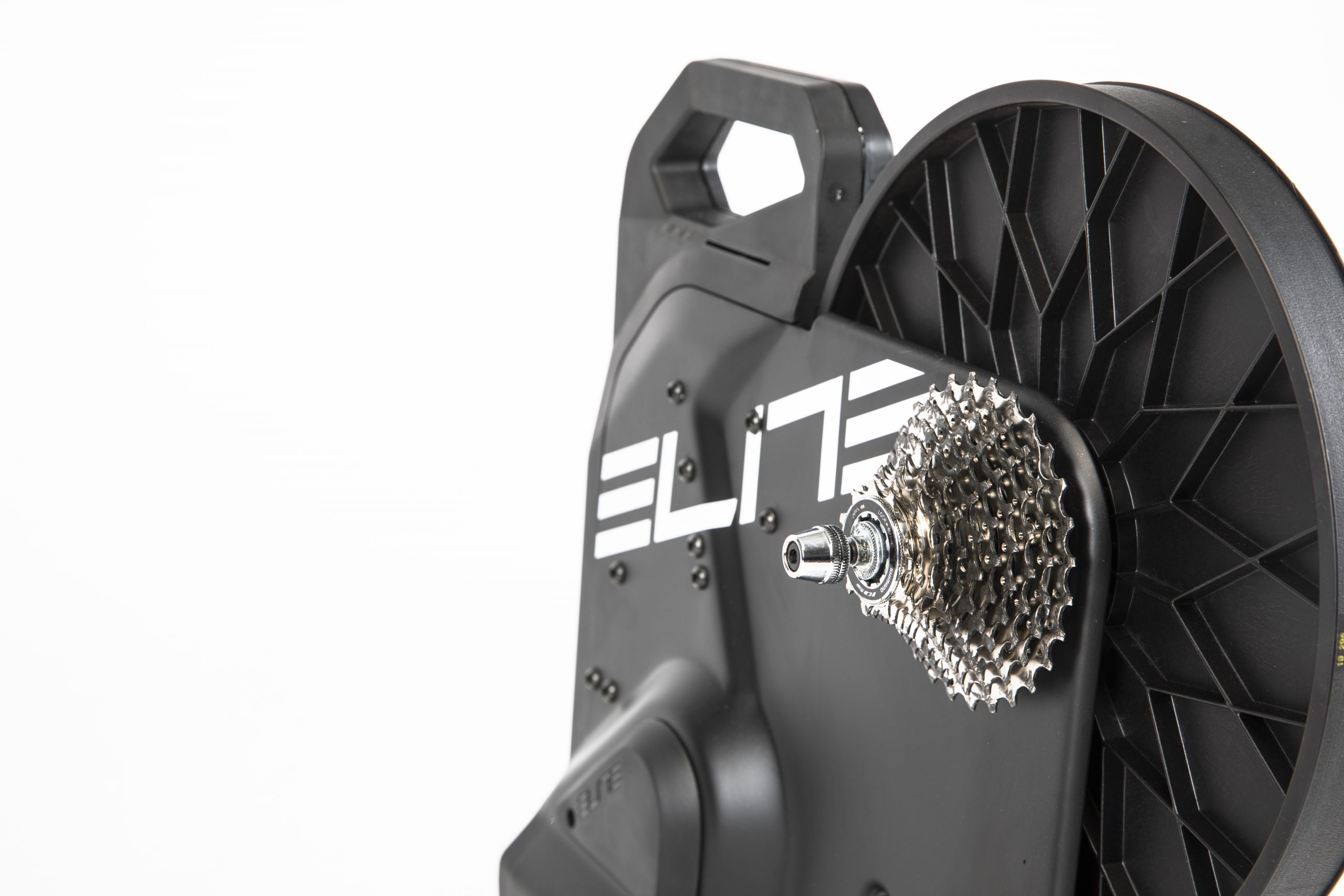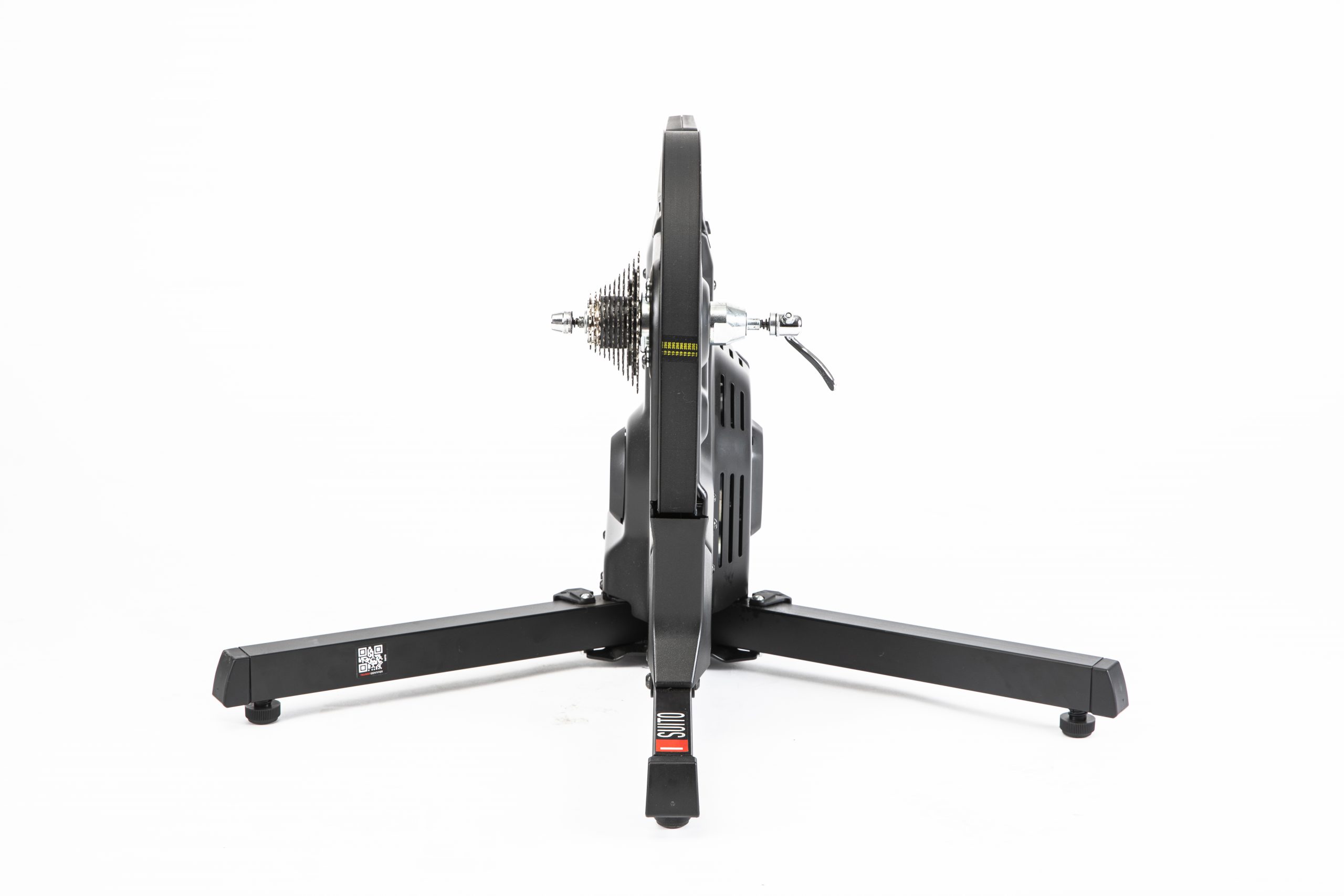Elite Suito smart turbo trainer review
Smart direct drive turbo trainers don't have to set you back four digits any more

A sturdy and robust turbo trainer which combines realistic ride quality with ample resistance, without creating a racket. The Suito isn't as accurate or as powerful as the top end models, but can rival most of their features at a much more accessible price point.
-
+
Easy to set up
-
+
Competitively priced
-
+
Smooth pedal feel
-
-
Not as accurate as top models
You can trust Cycling Weekly.

Indoor cycling is certainly not the ‘needs must’ form of torture training that it used to be. Immersive online worlds such as Zwift’s Watopia and Sufferlandria from The Sufferfest have partnered with direct drive smart trainers to create an almost enjoyable environment for those pedalling indoors. Now after the initial ‘oohs’ and ‘aahs’ have played out for the top-flight models, trickle down technology is beginning to bring the experience to a wider audience via more reasonably priced machines.
Enter the Elite Suito. The Suito is not Elite's most entry level smart trainer (there's the Zumo at £450 and the Muin at £275 that provides one-way interaction) - but it is an all singing, all dancing model which provides many of the benefits of the more expensive designs.
This is the first machine from the brand to arrive pre-assembled, with a Shimano 11-speed cassette already adorning the spindle. It’s compatible with 9, 10 and 11 speed cassettes from SRAM or Shimano.
Technically, Campagnolo is not listed but having run an 11 speed Campagnolo set-up with a Shimano cassette for some months I can attest to compatibility, even it not officially endorsed. Those who have progressed to 12-speed would need to purchase an add-on cassette adaptor.
The box contains adaptors for both quick release skewers (130mm and 135mm) and thru axles (142x12mm), and setting up was as simple as ripping open the packaging, extending the legs, fitting the correct skewer and plugging in the machine.
Elite calls this ease of use ‘Plug&Play’ and though ‘playing’ with an indoor trainer might be a little too much of a stretch for the imagination for anyone who has sweated their way through an FTP test, it’s absolutely true that elapsed time between opening the box and it being ready to use was less than 10 minutes.
The unit is mostly constructed from steel, making it feel incredibly robust. At 14.5 kilograms, I was pretty cautions maneuvering it up the stairs to my office/turbo space; in a battle between it and the wall I’m not sure the wall would come off well. Elite has built a wide handle into the design which makes carrying it quite easy.
The latest race content, interviews, features, reviews and expert buying guides, direct to your inbox!
>>> Cheap indoor fitness app set up

The legs come with adjustable supports, so you can cater for a wonky floor or patio. Extended, they create a solid base, which was reassuring even during full-pelt sprints, but you can tuck them away and the Suito inhabits minimal floor space.
Elite provides a supporting ‘myETraining’ App, which can be used to calibrate the turbo trainer, though you can also do this via your cycling computer (I used a Garmin Edge 520). You get 12-months’ free use of the app’s subscription services with any Suito purchase too, though if you intend to use Zwift (for which you get one month free), The Sufferfest or Trainer Road this may be irrelevant.
>>> Indoor cycling apps compared
The turbo communicates with devices via Ant+, FE-C and Bluetooth, and I never experienced any issues with connecting to a cycling computer, phone or iPad – the trainer was picked up every time and has never dropped out, which is something of a rarity.
>>> Cheap Zwift setup: what you need
It’s the flywheel on a turbo trainer that creates the feeling of inertia and, alongside other factors, dictates the level of feedback you receive and how well it imitates the road. Elite has opted for a 3.5kg flywheel. You’ll typically find heavier flywheels on the top end model, for example the Wahoo Kickr (£999.99) which received ‘Best on Test’ in Cycling Weekly’s last head to head has a 7.25kg flywheel.
Whilst the Elite Suito doesn’t feel quite as smooth and lifelike as the very best models, it’s still worlds apart from the feeling of wading through treacle that we all put up with on the turbo trainers of days gone by. If faced with the choice between an old style, wheel on turbo trainer with a magnetic resistance unit and a set of rollers, I would always choose the latter – but pedalling on the Elite Suito felt just as natural and quickly became my preference.
>>> Rollers vs Turbo: which is best?
Elite says that the trainer is able to replicate slopes of 15 per cent, and has a maximum power capacity of 1,900 watts. Throwing myself into Zwift’s recreation of the Harrogate circuit at the UCI World Championships in Yorkshire, I found the ramps in elevation smooth and realistic, and there was plenty of resistance on offer there to have me breathing hard. When slopes got to around 15 per cent on the 'NYC KOM' loop, I did notice a strange sensation, a little like wheel slip outdoors, but once I got the pedals churning this faded and I could push hard and maintain the pressure as the climb built up.
>>> Wheel-on vs direct drive turbo trainers
Whilst more expensive models like Elite’s Drivo II (£1200) will go to 24 per cent, you have to ask yourself how necessary this really is in the course of an average training session, or indeed to mimic your typical outdoor ride.
The most advanced trainers, like the Drivo II, can boast power meter accuracy of +/- 0.5 per cent, the Suito’s margin of error is wider, at +/- 2.5 per cent. To put that into context a 250 watt effort using the more expensive unit might produce a reading on the screen of 249 to 251 watts, whilst the Suito may read anywhere from 244 to 256 watts. For someone who has been training for a number of years, an improvement of a couple of watts over a given duration would be quite an achievement, so that extra 2 per cent drift isn't insignificant.
Personally, I found the power readings to be true to expectation, and swapping between the Elite Suito indoors and a Quarq DZero power meter out on the road, efforts were always comparable. Though I didn’t have a bike with an alternative power meter fitted to run a direct comparison, I never felt that the unit was under or over reading for the given effort.

The Suito was quiet as well. It's not the quietest of all the direct drive offerings, but I had no need to worry that the whirr of the trainer would upset my partner even during early morning sessions when the rest of the house was asleep. The noise from my fan and the Spotify soundtrack being bluetoothed to my smart speaker easily overtook the sub 80 decibels emitted by the turbo trainer.
In terms of value, Elite does offer cheaper alternatives, such as the Zumo, which replicates climbs to 12 per cent, withstands 1,100 watts and has an accuracy race of +/-3 per cent. However, the Suito is significantly cheaper than the top of the range models such as the brand’s own Drivo II and the Wahoo Kickr, yet it performs almost as well.
The slopes might not be quite as steep, max power is a little lower and the accuracy isn’t quite as tight. To determine if that matters to you, you have to ask yourself how often – and for how long – you normally climb over 20 per cent or hold over 2,000 watts, and how much difference a few watts here and there matter to you in terms of accuracy. The answer might be often and a lot, in which case it’s worth spending more. If not, this Suito is an excellent investment.
Michelle Arthurs-Brennan the Editor of Cycling Weekly website. An NCTJ qualified traditional journalist by trade, Michelle began her career working for local newspapers. She's worked within the cycling industry since 2012, and joined the Cycling Weekly team in 2017, having previously been Editor at Total Women's Cycling. Prior to welcoming her first daughter in 2022, Michelle raced on the road, track, and in time trials, and still rides as much as she can - albeit a fair proportion indoors, for now.
Michelle is on maternity leave from April 2025 until spring 2026.
